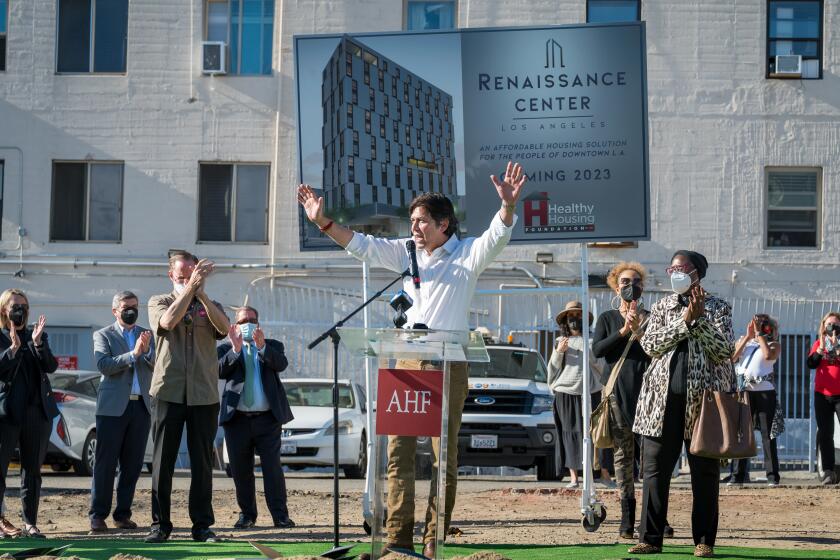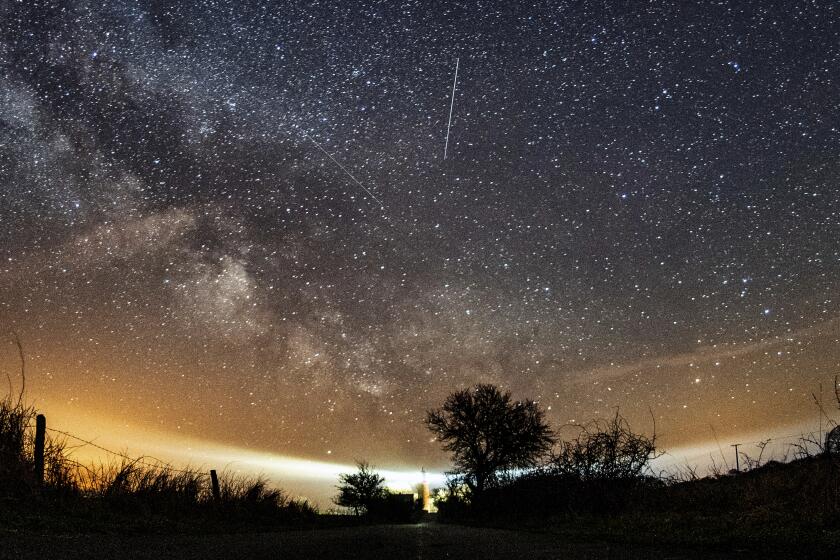LAPD’s in-car camera effort is lagging
- Share via
The Los Angeles Police Department this week found itself in a familiar place: defending a controversial shooting by officers that has led to conflicting accounts of what happened.
For more than two decades, the LAPD has been trying to install cameras in patrol cars, hoping to record the actions of officers and avoid the disputes that fuel community distrust.
But, today, most LAPD cruisers still lack cameras. Cars in only one of the LAPD’s four bureaus have the technology. There are no cameras in police cars used to patrol the neighborhood where the fatal shooting of a mentally ill man by LAPD officers took place Monday.
“I sure wish the in-car cameras had been put in that car by now,” Los Angeles Police Commission President Steve Soboroff said in the shooting’s aftermath.
Police and elected officials have repeatedly trumpeted the promise of cameras, saying they will keep officers honest and protect them against false claims of abuse.
The department launched its most recent attempt to install cameras in 2008, saying it planned to have the technology in its roughly 1,600 patrol cars by the end of 2012. But technical problems and cash shortfalls have delayed the effort.
Only about 300 cars have cameras installed. Officials now estimate all 1,600 LAPD patrol cars will get cameras by the end of 2016, assuming there is enough money.
In the Florence neighborhood where Monday’s shooting occurred, some residents expressed frustration that the cameras had not been installed.
Michael Waddels, 57, said that without cameras, the LAPD will have a more difficult time convincing the public that its officers’ actions were justified.
“Without cameras, they could get away with anything,” he said.
Gina Lopez, 21, agreed, saying a recording could have made “certain that those who want justice can get it.”
The killing happened in a particularly fragile atmosphere as another controversial police shooting in Ferguson, Mo., has led to clashes this week between angry protesters and police.
As in Los Angeles, there was no camera installed in the police vehicle involved in that shooting, in which several witnesses have disputed the account police have given for the officer’s decision to open fire. The Ferguson police chief said two in-car cameras owned by the agency remain unused in boxes because a federal grant used to purchase the equipment did not cover the costs of installation.
In Los Angeles, details of what led to the killing of Ezell Ford, 25, as he walked home along 65th Street are unclear.
Two veteran gang officers driving in a patrol car reportedly spotted Ford and pulled over to speak with him, according to a preliminary version of the encounter released by the LAPD.
When the officers approached him, Ford turned and “grabbed one of the officers and a struggle ensued,” according to police. During the struggle, Ford reportedly tried to pull the officer’s handgun from its holster, leading the officer to draw a backup weapon, according to police. Both officers shot at Ford, who family members said suffered from schizophrenia and other mental illnesses.
Some residents have disputed the officers’ version of events, saying Ford appeared to be complying with officers’ commands and was shot without apparent justification.
An increasing number of police agencies nationwide have been adding car cameras in an effort to better track incidents involving their officers. Nearly three-quarters of police departments in the U.S. have outfitted at least some of their patrol cars, according to a 2012 survey by the Police Executive Research Forum. About a quarter of the agencies had cameras in all of their vehicles, the survey found.
In-car cameras have been a fixture in the Orange County Sheriff’s Department’s patrol cruisers for more than 15 years, an agency spokesman said. The department has upgraded the technology several times, and its footage is a regular feature of court cases, said Lt. Jeff Hallock.
L.A. County sheriff’s cruisers don’t have cameras, but the department plans to soon start testing a variety of cameras that deputies will wear, a department spokeswoman said.
So far, only cars in the LAPD’s South Bureau have cameras. In 2012, one of the cameras captured an LAPD sergeant kicking a woman during an arrest and recorded the woman’s difficulties breathing. The woman later died. The officer, Mary O’Callaghan, was charged last year with assault.
The LAPD’s car cameras are activated automatically whenever officers turn on their vehicle’s emergency lights and siren. Officers are also expected to trigger them manually for traffic stops and other encounters. A forward-facing camera records activity in front of the patrol car, while another records suspects detained in the back seat. Small transmitters worn by officers relay audio back to the recording system as well.
The push for cameras in LAPD cars dates back to at least the early 1990s. It was a key recommendation of the Christopher Commission, which was formed to make reform recommendations in the wake of Rodney King’s beating by LAPD officers in 1991, which was captured on video by a bystander.
The idea languished from the beginning. An early pilot program that called for cameras to be installed in a few dozen cars fell apart when the vendor went out of business.
When federal officials forced a sweeping set of reforms on the LAPD following the Rampart scandal and other revelations of corruption, the call for cameras in cars was renewed. In response, the LAPD contracted with IBM in April 2008 to install and maintain cameras. It planned to equip cars in each bureau one year at a time, starting with South Bureau.
Department officials, however, were slow to resolve glitches with the technology, and it was two years before the cameras were operational in South Bureau. By then the city was mired
in a financial crisis, leaving the department without the funding for more cameras.
Maggie Goodrich, the LAPD’s chief information officer, said the department is on track to outfit cars in its Central Bureau with cameras by the end of this year. Central Bureau includes Newton Division, where Monday’s shooting took place.
But even that effort has been a struggle as the city fell far short of allotting the $8 million for the Central Bureau’s cars. The department had to rely on a $1-million donation, while the city borrowed money to cover another portion of the costs.
“I know that any road has a number of bumps and a number of ups and downs, and we’ve certainly had those in in-car video,” Chief Charlie Beck said at a recent police commission meeting when the donation was discussed.
Under the current timeline, Goodrich said, the department plans to add cameras to cars in the West Bureau and finally to those in the Valley Bureau. Equipping those bureau’s will cost another $20 million, she said.
The LAPD is also testing the use of cameras that officers wear on their uniforms to record encounters.
Times staff writers Matt Pearce, Kate Mather and James Queally contributed to this report.
More to Read
Sign up for Essential California
The most important California stories and recommendations in your inbox every morning.
You may occasionally receive promotional content from the Los Angeles Times.













